
Ashley James: ‘We have a totally warped idea of what a mum should be’
Ashley James says there’s “a total lack of understanding” about feeding babies – and that mothers who pump shouldn’t have to hide away. “With pumping, people should feel confident, just like with breastfeeding, to do that anywhere,” says the DJ and influencer. “If anyone were to have a problem with that, they need to address some deep-rooted issues of why feeding a child would be a problem.” James, who has a two-year-old son, Alfie, and a four-month-old daughter, Ada, with partner Tommy Andrews, argues there’s a huge lack of knowledge about how all-consuming feeding a child with breast milk is – from the hours spent feeding or pumping (an estimated eight to 12 times a day, up to 45 minutes each time for newborns) and “also the fact that you can’t just leave your child”. The 36-year-old says: “People don’t really know about engorgement, mastitis, blocked ducts, supply issues, and all the reasons that people choose to pump.” For example, going back to work. “[People think] ‘Oh just give them a bottle or pump in the morning, and then they’ll be fine’. There’s a total lack of awareness.” The former Made In Chelsea star, who hit the headlines after breastfeeding Alfie live on the Jeremy Vine Show in 2021, is currently using a pump alongside breastfeeding Ada for her to have the option of a bottle, too. “I ended up having to breastfeed [on TV] and there was this really weird backlash – people saying it was attention seeking. [Which is] funny to me. Let’s say that was my plan, I’m a total narcissist and I’d decided this was going to be my chance to get publicity… how would I have managed to convince my three-month-old baby to feed at that exact moment? “Who would I want attention from? Is it because our ‘boobs are for men’ and therefore I’m hoping that men might look at my boobs, because I’ve never wanted that, but I especially don’t want that when I’m feeding my child. I think we have this totally warped idea of what a mum should be. “We are always told, they’re the most important years of a children’s life, those early years, and it’s so formative, but yet I feel like we expect mums to almost keep their children hidden away, but then we expect them to thrive.” On Channel 4’s Steph’s Packed Lunch last month, James used an Elvie Stride breast pump live on air – unbeknownst to viewers and crew. The discreet hospital-grade, hands-free, electric device can be worn under clothing to pump milk without anyone noticing. “I was worried about having blocked ducts and didn’t want to go back to that horrible situation of having mastitis again,” she says. James had the condition when breastfeeding her son two years earlier. “I just wanted to get on with my job, but I needed to deal with the engorgement issue. “It was almost behind the scenes. I was having this huge [issue] with my health – but us mums tend to just get on with the job. “In terms of pumping, I don’t know why we feel like as a society that any form of feeding should be done in private, especially if it’s not bottle feeding. Hats off to all the people who exclusively pump because it’s so constant. She believes it should be celebrated as much as breastfeeding because “it’s really hard to manage, people don’t know the logistical nightmare of it all. “You just don’t see anyone pumping, but you know that people are doing it. So why is it that people are stuck at home? “Obviously lots of people who are trying to feed have to go back to work, for various reasons – maternity pay or maternity leave not being long enough,” she adds. In fact, James started working again, on photoshoots and TV, just five days after the birth of Ada. “I’m self-employed, I don’t get maternity leave – you do what you have to do,” she says. These days she shrugs off negative comments online, but James has experienced real-world shaming for public feeding too. “I was in a children’s attraction in London, breastfeeding Alf, and a member of staff came up to me and asked me to move into the loos. I was like, this is a child-friendly attraction space! “[I said] ‘No, would you eat in a public loo?’. I don’t even want to go to the loo in a public loo, never mind feed my child there!” Ashley James is an ambassador for Elvie. Find out more information about the Elvie Stride at elvie.com. Read More Charity boss speaks out over ‘traumatic’ encounter with royal aide Ukraine war’s heaviest fight rages in east - follow live Host Maya Jama’s glamorous Love Island outfits cost over £10,000 Do you need to watch what you eat when you’re breastfeeding? Sten dos: What you need to know about the quirky wedding trend
2023-08-01 21:26
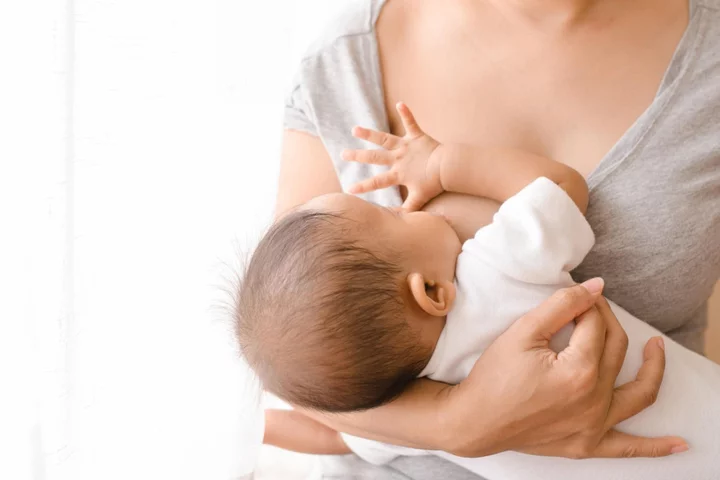
Do you need to watch what you eat when you’re breastfeeding?
Most new mothers try to breastfeed their baby at first, unable to ignore the oft-repeated mantra ‘breast is best’. However, despite the vast benefits of breastfeeding that are being highlighted during World Breastfeeding Week (August 1-7), including protecting the baby from infection and disease, and health benefits for the mother, a huge proportion of mothers quickly give up. Figures from the last UK-wide Infant Feeding Survey (albeit from 2010) found that while more than three-quarters of women start breastfeeding when their baby’s born, this drops to 55% doing any breastfeeding at six weeks, while at six months, just 34% do any breastfeeding, and only 1% breastfeed exclusively. There are many reasons for this, but Public Health England research found more than half of mothers were concerned they might need a special diet to breastfeed, and a similar proportion were worried that breastfeeding meant they couldn’t tell if their baby was getting too much or too little milk. But should new mums really be concerned about eating or not eating specific foods if they’re breastfeeding, and can their diet affect how much milk their baby’s getting? The simple answer is no, as long as they’re eating a healthy balanced diet, says the baby charity Tommy’s. Because while the NHS warns pregnant mothers to avoid specific foods like soft blue cheeses, undercooked meat, liver, pâté and game meats, there are no foods breastfeeding mums must not eat, says Tommy’s. “There are a lot of myths out there around breastfeeding which can leave new parents unsure of what to do and where to turn,” says Tommy’s midwife Sophie King. “If you choose to breastfeed or combination feed, there’s no special foods you need to have, but a varied diet can help our bodies make the best quality milk for our babies. This typically includes lots of vegetables, fruits, grains and proteins. It’s also important that you stay well-hydrated with plenty of water. “ In addition, she says it’s recommended that mothers who are exclusively breastfeeding take a daily vitamin D supplement. An occasional alcoholic drink is unlikely to cause any harm if you’re breastfeeding, says King, but she warns: “Try not to have more than one or two units of alcohol once or twice a week. There’s some evidence that regularly drinking more than two units of alcohol a day while breastfeeding may affect your baby’s development.” In addition, caffeine can reach babies through breast milk, and King explains: “Caffeine is a stimulant, so if you have a lot, it may make your baby restless and keep them awake.” Caffeine occurs naturally in lots of foods and drink, including coffee, tea and chocolate, and it’s also added to some soft drinks and energy drinks, as well as some cold and flu remedies. “There’s not enough information to say how much caffeine is too much, and babies respond to caffeine differently,” says King. “But it’s a good idea to reduce how much caffeine you drink, especially when your baby is less than six months old.” But does what a mother eats affect her milk supply? Again, the answer is no, explains Justine Fieth of the breastfeeding support charity La Leche League GB (LLLGB). “There are no particular foods you need to eat to increase breastmilk – milk production is determined by the amount of milk removed from the breast,” she says. Breastmilk is made in the mother’s breasts, directly from her blood, rather than from the food she eats. Fieth says LLLGB recognises the importance of a varied and healthy diet, and stresses that it’s important for mothers to speak to a qualified breastfeeding supporter if they feel they have low milk supply. “Unless there’s a physical or physiological reason for low milk production, a mother who breastfeeds on cue will be able to produce enough milk for her baby, regardless of what she eats,” she explains. “In certain circumstances, medications can be used to increase supply, but diet plays a minor part – though obviously, eating a varied, healthy diet is always a good thing.” For breastfeeding support, contact the National Breastfeeding Helpline on 0300 100 0212. Read More Charity boss speaks out over ‘traumatic’ encounter with royal aide Ukraine war’s heaviest fight rages in east - follow live Sten dos: What you need to know about the quirky wedding trend Why have the birds disappeared from my garden? Psoriasis Awareness Month: Everything you need to know
2023-08-01 17:26
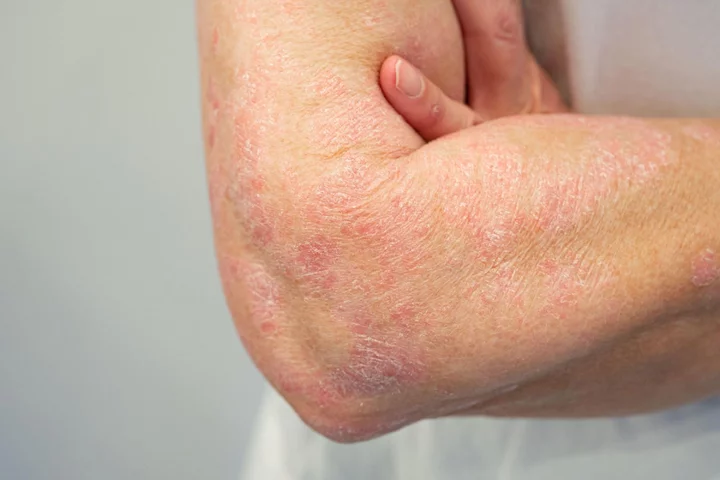
Psoriasis Awareness Month: Everything you need to know
Psoriasis has been a hot topic in the health world in recent years, thanks in part to one very vocal – and very famous – celebrity. Kim Kardashian has shared the ups and downs of her experience with the skin condition on TV and social media, and penned a piece on the subject for her sister Kourtney’s website Poosh. “When I was 25, I had my first psoriasis flare-up,” the reality star and entrepreneur wrote. “I got a common cold, and since psoriasis is an autoimmune condition, this triggered it. It was all over my stomach and legs.” After an injection of cortisone recommended by a dermatologist, the symptoms went away for five years, but came back when Kardashian was in her 30s. “Psoriasis can start at any age, but most often develops in adults between 20 and 30 years old, and between 50 and 60 years old,” says Dr Nisa Aslam, a GP from Typharm’s Skin Life Sciences Foundation. “The severity varies greatly. For some people, it may be relatively minor, whilst for others, psoriasis has a huge impact on quality of life.” In the case of Kardashian, her psoriasis – which has no known cure – also went away during her two pregnancies, but came back after and has fluctuated ever since. “I’ve become extremely comfortable with my psoriasis,” she continued in her essay, revealing that sometimes she covers it up with body make-up and sometimes she doesn’t. “I hope my story can help anyone else with an autoimmune disease feel confident that there is light at the end of the tunnel.” To mark Psoriasis Awareness Month in August, these are the key facts you need to know about the chronic condition… What are the symptoms of psoriasis? “Psoriasis is a type of skin disease that affects about 2% of the population of the UK,” says consultant dermatologist Dr Natalia Spierings, author of Skintelligent: What You Really Need To Know To Get Great Skin. “Patients develop thickened red plaques of skin with thick silvery white scale over the top.” The most common places for plaques to appear are the backs of the elbows, the front of the knees, the scalp and the lower back. They may be itchy or painful. “On brown and black skin, the patches can also be purple or dark brown in colour, and the scales may look grey,” says Aslam. Psoriasis is also linked with an inflammatory form of arthritis, known as psoriatic arthritis, which Kim Kardashian was diagnosed with in 2019. Aslam explains: “Psoriatic arthritis affects the nails, joints and can affect the eyes, the cardiovascular system and may cause insulin resistance, leading to diabetes.” What is it caused by? “Psoriasis is an ‘immune-mediated’ disease, which means that the skin is inflamed, due to a dysfunction or abnormality in how the immune system works,” Spierings says. Doctors believe that an overactive immune system speeds up skin cell turnover, which causes plaques. “Normal skin cells will grow and then shed off the top of the surface of the skin in a cycle which takes approximately a month,” Spierings continues. “In psoriasis, this process is sped up to only three or four days, so the skin doesn’t have time to shed off, and therefore the scale builds up on the skin.” Diet and lifestyle factors can cause flare-ups of the condition. “Known triggers include drinking excessive alcohol; family history; smoking; stress and hormonal changes, for instance during puberty and menopause,” says Aslam. “Plus certain medicines such as betablockers, used to treat high blood pressure; throat infections; other immune disorders and skin injuries. Obesity has been shown to double the risk of psoriasis.” What treatments are available? While there is no cure for the chronic condition, it is possible to treat the symptoms during flare-ups. “There are a variety of effective prescribed skin treatment options, from steroid ointments and creams, to the development of new formats like medicated tapes such as Fludroxycortide tape,” says Aslam. “This is a transparent medicated surgical tape impregnated with the steroid Fludroxycortide, which can be cut to size. When applied to the skin, it helps to reduce redness, swelling and itching.” UV light or sun exposure has also been shown to help psoriasis. “But remember that uncontrolled sun exposure also increases your risk of skin cancer and premature ageing,” says Spierings. “If you want to use sunlight therapy for your psoriasis, it is best to do this via a dermatologist using special machines to deliver the UV treatment.” Because it’s an inflammatory condition, psoriasis can be affected by what you eat. “Certain foods, particularly ultra-processed foods high in fat, salt and sugar may cause an inflammatory response,” says Aslam. “It’s important to stick to a healthy diet with plenty of vegetables, fruits, wholegrains, beans and lentils, and oily fish with small amounts of lean meat, and small amounts of dairy if liked.” She adds: “Finding the most effective therapy is often a matter of trial and error, so it’s important to keep going back to your doctor, or dermatologist, for advice.” Psoriasis and mental health It’s important to note that skin conditions like psoriasis can have a detrimental impact on mental health. “A recent Typharm survey found that 23% of those surveyed think others believe they are infectious and 19% think they are perceived as unhygienic,” Aslam says. However, it is not contagious or caused by poor hygiene. “Patients with psoriasis have a high risk of developing depression because of their skin problem,” says Spierings. “It is incredibly important to seek proper treatment if you have psoriasis or think you may have it.” Read More Charity boss speaks out over ‘traumatic’ encounter with royal aide Ukraine war’s heaviest fight rages in east - follow live How to dress in rainy summer weather How to make the Prince of Wales’s Earthshot burger 13 potential cancer symptoms you should get checked out
2023-08-01 15:28
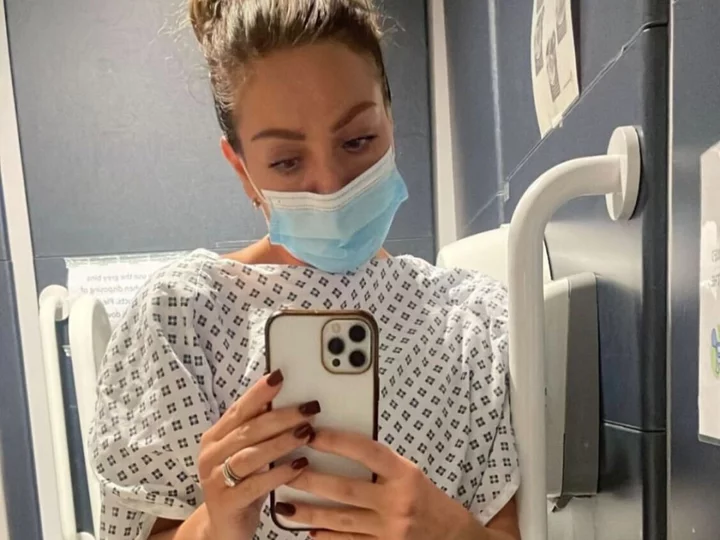
Strictly’s Amy Dowden shares health update following second cancer diagnosis: ‘Not looking forward to this’
Amy Dowden has admitted that she is “not looking forward” to undergoing a procedure that will leave her with a permanently visible scar. The Strictly Come Dancing star, 32, underwent a single mastectomy to treat stage three breast cancer after she was first diagnosed in May. But last month, she was told she needed chemotherapy after further tumours were discovered following the surgery. In her latest update, the professional dancer shared a hospital selfie taken in the bathroom mirror, which showed her wearing a hospital gown and a face mask. She wrote over the photo: “Really not looking forward to this! Another scar this one only [an] inch long but will always remind me and will always be [visible].” Dowden also shared a series of photos from the procedure, which saw her getting fitted for a port for chemotherapy. Dowden wrote in the caption that she wanted to share her journey as she undergoes the treatment to “hopefully get others checking and for understanding what we go through”. “Wasn’t looking forward to it. Wasn’t easy... My veins! Feeling tender, bruised and sore but the port will help massively over the next few weeks and allow me to dance when I feel well enough,” she continued. “A port sits under the skin and the tube goes along my vein to the heart giving safe access for chemo (I believe. I’m no doctor!).” It comes after Dowden, who also suffers from Crohn’s disease, revealed in an Instagram Live chat with breast cancer survivor and Paralympian Erin Kennedy that “everything changed” for her. “I was originally going to have a lumpectomy, radiotherapy and hormone treatment. But then, after my MRI, they found another tumour so then it changed into a mastectomy and then, after my mastectomy, unfortunately, they found even more tumours,” she explained. “They found another type of cancer and then they told me I needed chemo – for me that was a massive blow. It wasn’t in the plan, originally – and I know the plan you can’t get fixated on.” She expressed fears that chemotherapy would stop her from her dance practice, adding: “You can take away my boob but you can’t take my dancing away from me and that’s what I get really upset about.” After her initial breast cancer diagnosis, Dowden was optimistic that she would be able to return to Strictly this year. However, her new treatment means she will not be able to do so in a competitive capacity. “This year, it means I’m not going to be able to dance with a celebrity on Strictly, but I’m in such regular contact with the team – the BBC have just been utterly incredible,” she said. Last week, Dowden made an emotional return to the set of the dance competition to see all her colleagues ahead of her treatment. In an Instagram Story update, she revealed she had surprised her friends on set and said: “I had happy tears to see them all. I got to watch some of the dancing, catch up with them all and hear some exciting plans for this series. I am excited for you guys, it is going to be absolutely brilliant.” Dowden first revealed her diagnosis in hopes it would raise awareness around the disease alongside her existing work on Crohn’s, a lifelong disease that affects parts of the digestive system. In 2020, she fronted a BBC documentary about how her life has been impacted by Crohn’s, titled Strictly Amy: Crohn’s and Me. Dowden is married to her long-term partner Benjamin Jones, who is also a professional dancer. They wed in 2022. Read More A psychic said she’d spoken to my late partner’s spirit – and I didn’t like it Prince Harry’s eco-tourism company quietly announces new board of directors - and he’s not on it Bakery delivers brilliant response to ‘well-known celebrity’ offering ‘exposure’ in return for free cakes Amy Dowden announces absence from Strictly Come Dancing due to chemotherapy Psoriasis Awareness Month: Everything you need to know Mandy Moore opens up about her two-year-old son’s Gianotti-Crosti Syndrome diagnosis
2023-08-01 15:21

Mandy Moore opens up about her two-year-old son’s Gianotti-Crosti Syndrome diagnosis
Mandy Moore has opened up about her two-year-old son Gus’s diagnosis with Gianotti-Crosti Syndrome, a rare skin condition that develops during childhood. The 39-year-old actress detailed her son’s condition in a series of posts on her Instagram Story. She explained how Gus, who she shares with her husband Taylor Goldsmith, woke up with an unidentifiable rash on 29 July. According to Moore, Several doctors were unsure of what exactly the rash was but ultimately ended with a diagnosis of Gianotti-Crosti Syndrome. “This sweet boy woke up with a crazy rash on Saturday am,” Moore wrote over a photo of Gus holding a lollipop inside what looked like a doctor’s office. “We thought maybe an eczema flare? Poison oak? Allergy. We tried to deduce what it could be and did anything to help him find relief from the itch.” She continued: “Went to urgent care. Paediatrician. Dermatologist. Paediatric dermatologist. All the while, he smiles and carries on like the rockstar that he is.” The following photo displayed a close-up of Gus’s legs and feet covered in raised red patches. “Turns out it’s a viral childhood rash that just spontaneously appears called Gianotti-Crosti syndrome. It’s all over his legs and feet (ouch) and the backs of his arms but nowhere else,” the This Is Us star wrote. “There’s nothing to do but a steroid cream and Benadryl at night. And it could last six to eight weeks. Ooooof. Anyone ever experience this?” Moore added a final slide of Gus from a different day and admitted to the struggle she’s endured as a parent. “All of that to say, this parenting thing is weird and hard and sometimes you feel so helpless (and yes I’m ever so grateful it’s only an itchy skin condition). Kids are resilient and as long as he’s smiling through it, we are a-okay,” the creator noted. According to WebMD, the rash can also be referred to as “papular acrodermatitis of childhood,” and affects the legs, arms, and face. Viral illnesses can bring about this rare condition and can appear while “your child is recovering from another illness”. Children between the ages of nine months to nine years old are more likely to develop the rash. However, it’s not impossible for adults to get it. “The rash often first appears on or near the buttocks, then spreads to the arms, legs, and face. The blisters vary in size and may be filled with fluid. They may be pink, red, or brown in color,” WebMD said. Swollen lymph nodes and a mild fever are symptoms of the skin condition too. Although the rash may take anywhere between four to eight weeks to heal on its own, little to no scarring should be left on the skin. In 2021, Moore gave birth to Gus, short for “August,” before having her second baby, Oscar ‘Ozzie’ Bennett. The Tangled Ever After voice spoke about the gratification she and Goldsmith felt at the end of each day in her 31 May post. “These dudes rule my heart. Each night, Taylor and I fall into bed after we’ve put them down; after we’ve straightened up from the chaos of dinner/bath and set up for the next morning and we chat about the day,” the actor proclaimed. “I wouldn’t have it any other way. I mean, I do look forward to feeling moderately well rested sometime in the next decade? But [shrug emoji].” The photo showed Gus and Ozzie staring at each other on a picnic blanket at the park. Read More Netflix lists $900,000 AI job amid SAG-AFTRA strike for protections against ‘scary’ technology Mandy Moore shares struggle with potty training her toddler son: ‘It’s wild’ Mandy Moore gives birth to her second child Experts reveal why you keep waking up at 4am, and how you can prevent it Mum with stoma bag shares bikini pictures to celebrate ‘second chance at life’ Charlotte Dawson gives birth to her and Matt Sarsfield’s ‘rainbow baby’
2023-08-01 02:25

Mum with stoma bag shares bikini pictures to celebrate ‘second chance at life’ after cancer scare
A mum who was diagnosed with Crohn’s disease aged 13 and had to have her colon removed eleven years later as it became pre-cancerous, giving her a “second chance at life”, is now an influencer bearing all to show it is possible to “live a beautiful, normal, happy life” with a stoma bag. Meghan Cary Brown, 31, a stay-at-home mum and content creator, from Charlottesville, Virginia, in the US, spent most of her teenage years in “so much pain” and had to “deal with bullying as well as being sick”. At 24, the mum of two, to Cora, three, and 23-month-old Colin, was told her colon was precancerous, causing her to “collapse on the floor crying”, just eight months after she had married Thomas Brown, now 31, a project manager. Meghan was in a “very dark place” and was “overcome with sadness” at the thought of getting cancer, so with some encouragement from her doctor, had her colon removed and had a stoma bag fitted. One year later she created an Instagram page, and more recently a TikTok, to share her story and raise awareness about life with a stoma bag with thousands of followers. Her postings include an open discussion of her experience, sharing bikini pictures and openly explaining she has worn “beautiful lacy wraps” for stoma bags in intimate moments with her partner, and it has “served as a healing mechanism” to make her realise she needs to “stop worrying so much” about the opinions of others. “I started posting as I wanted people to see that you can live this beautiful, normal, happy life with an ostomy bag, and when I was researching it I couldn’t see anyone my age talking about it,” she told PA Real Life “But the other reason was that it almost served as a healing mechanism for me – I think it was really powerful to just put myself out there on the internet. “Like, this year at the beach for the first time I wore a bikini with my bag on show and it felt amazing – I just thought life is too short.” After Meghan was diagnosed with Crohn’s disease she had to be home-schooled for a year because she “could not even get out of bed”. Meghan said: “My parents would find me lying on the bathroom floor because I could not get up and walk to the bed, I was in so much pain, and I had so much fatigue. “But it was also hard because since I was home-schooled, we didn’t have social media or anything, so no-one knew where I was, and there were lots of rumours spread about me – I had to deal with bullying as well as being sick.” Meghan was put on lots of different medications and had to deal with their side effects, such as giving her a “big moon face” as she retained water. She said: “I can remember having to get clothes three times my size and just breaking down crying. “That’s really difficult when you’re a teenage girl.” One year later Meghan was “in remission” for Crohn’s and was able to return to school. She continued taking “maintenance medication” which kept her symptoms at bay but, when she was in her first year of university, she began getting sick again. She explained: “I fell out of remission and it turned out I formed antibodies towards the drug I was taking so it was no longer working. “I had to inject myself at home while in college so it was really difficult.” Meghan also had to have regular hospital visits and aged 24, eight months after getting married, a routine colonoscopy showed that her colon was pre-cancerous. She said: “When they told me I had high-grade dysplasia deep within the tissue of my colon, and it was pre-cancerous, I was heartbroken. “I can remember standing in the kitchen when my doctor told me this over the phone, and it made me collapse on the floor crying because when you hear that word, cancerous, all you can think is that you’re going to die. “It was terrifying.” At the follow-up appointment Meghan was told she could have routine checks to make sure the cancer was not progressing or have her colon removed. She said: “I was adamant that I wasn’t going to have my colon removed – I thought my life would be over if I had that done. “I was in a very dark place and I was overcome with sadness. “But when I told my doctor my decision, he explained that I could have it removed now, or in a few years’ time I could be a mum with young children and have cancer. “That just put things into perspective for me – it made me realise it’s not just about me, so I decided to have it removed.” From that moment on, Meghan decided to live her life to the full. She said: “I decided I was going to look at this as my second chance at life – I had already been incredibly sick for 10 years – I told myself I was going to look at this as a positive thing. “Before, there were so many things I couldn’t do, like I had so much anxiety riding in a car because I couldn’t control my bowels and I was so worried that I wouldn’t be able to find a bathroom.” It took Meghan a few months to get used to having a stoma bag, and she explained what it is like day-to-day: “I change the whole system appliance every three to four days, and throughout the day I have no feeling. “I don’t have the urge to go to the bathroom, it just happens. “Throughout the day I’ll just go to the bathroom and empty my bag – I do this around six to eight times a day.” Meghan also had to adjust to having a stoma bag while being intimate with her husband. She said: “I wore beautiful lacy wraps made for people with bags, with a pocket to tuck it in, as it helped my body image because I felt pretty. “But honestly, now I’ve had my ostomy bag for almost seven years, we’re so comfortable with one another – if anything ever happens during intimacy, we just can laugh it off and move on.” One year after having her bag fitted she decided to create an Instagram account to share her story, where she now has more than 14,100 followers, and a further 19,400 followers on TikTok. Meghan said: “It really puts life into perspective and really made me realise life is so short. “I need to stop worrying so much about the opinions of others, or what other people are going to think – making my Instagram account made me realise this too. “I’m just so happy to be happy and healthy.” Read More Charlotte Dawson gives birth to her and Matt Sarsfield’s ‘rainbow baby’ How to sleep during hot weather, according to experts How to keep your pet safe and healthy during a heatwave Charlotte Dawson gives birth to her and Matt Sarsfield’s ‘rainbow baby’ How to sleep during hot weather, according to experts How to keep your pet safe and healthy during a heatwave
2023-07-31 17:20

Experts reveal why you keep waking up at 4am, and how you can prevent it
Ever find yourself awake, staring into space at four in the morning? Is it just a bad habit, or is there something more sinister going on? And why does it always seem to happen at 4am? “We start to experience less deep sleep after around four to five hours,” says Lisa Artis, deputy CEO of The Sleep Charity, who have partnered with Simba mattresses. And once we’re in that lighter sleep faze, we wake much more easily. If you generally fall asleep around 11pm – which is a very common bedtime, 4am wake-ups are more likely. And there are many factors leading to these inconvenient stirrings. Hormones “Sleep is guided by our internal clock or circadian rhythm. One of the most significant and well-known circadian rhythms is the sleep-wake cycle,” Artis continues. “Sleep is regulated by the levels of two hormones: melatonin and cortisol, which follow a regular 24-hour pattern. Melatonin assists you in dozing off, while cortisol helps get you up, and keeps you awake,” she explains. Keeping an eye on your hormones is important in preventing those late-night wake-ups. “Engage in calming activities before bedtime, such as reading, listening to soothing music, or practising relaxation techniques, like deep breathing or meditation,” says Dr Mariyam H. Malik, GP at Pall Mall Medical. Equally, pop your phone down for a bit. “Blue light from electronic devices can suppress melatonin production. Try to avoid screens for at least two hours before bedtime, or use blue light filters. It is best to charge them in a separate room overnight,” Malik adds. Diet Caffeine, heavy meals, alcohol, sugar, and a lack of magnesium or B vitamins could lead you to have a more disturbed night’s sleep, according to Malik. Sugar and carbohydrates may have a particular impact. “A diet high in sugar and refined carbohydrates can cause blood sugar fluctuations, leading to wakefulness during the night,” she says. “It’s unlikely you’ll feel hungry in the middle of the night if your blood sugar dips,” notes Artis, “but to reduce ungodly hour awakenings, trial alternatives for your last meal or snack of the evening. Instead of carb or sweet-based snacks, opt for protein-packed and magnesium-rich foods, like hard boiled eggs, cottage cheese, pumpkin seeds, spinach, dark chocolate, cashews, chicken thighs or turkey.” Protein can take the edge off your night-time hunger, she says, while magnesium is known to support sleep. Needing a wee Do you wake up needing to wee at the same time every night? “Try not to drink excessive amounts of fluids before bedtime,” advises Malik. “It’s important to stay hydrated, but try not to drink anything for around two hours before your usual bedtime. Go to the toilet before you go to bed to empty your bladder. ” Age and life stage “Sleep tends to become more disrupted as people get older,” Malik explains. “Sleep patterns change with age, and various factors can contribute to sleep disturbances in older adults. Some common reasons for sleep disruption in the elderly include changes in your circadian rhythm, decreased melatonin production, medical conditions or medications, and potential sleep disorders.” It can also affect women during the perimenopause. “The reproductive hormones – oestrogen and progesterone – are entwined with the sleep and relaxation hormones, melatonin and serotonin,” says Artis. “When oestrogen begins to fall before and during menopause, it can create a disturbance in the sleep-promoting hormone melatonin, meaning it can’t properly balance out cortisol. When this happens, the ability to fall and stay asleep is affected.” Recurring hot flushes, night sweats, dry skin, and low libido can signal waning oestrogen. Artis advises incorporating foods with high levels of phytoestrogens into your diet throughout the day to help with this. “Phytoestrogens imitate the natural estrogens found in your body. As a consequence, they can bind to your body’s oestrogen receptors and produce similar effects.” Try lentils, kidney beans, chickpeas, tofu, edamame, spinach, cauliflower and broccoli. Worrying Stress is not good for sleep. One study by Bupa even found that 32 million Brits wake up worrying about their health at precisely 4:05 am. The report, which surveyed 4,000 British adults, revealed that more than three-fifths of us wake up in the middle of the night. If you are finding yourself awake at all hours worrying, or waking up with stressful dreams, there are a few things that may help. “Keep a journal by your bedside and write down your worries before going to bed. This practice can help get your concerns out of your mind and onto paper, making it easier to let go of them temporarily,” says Malik. You may also want to “engage in mindfulness or meditation exercises before bedtime. Mindfulness can help you focus on the present moment, reducing anxiety about the past or the future.” Read More Men have a problem – and it won’t be solved by either Andrew Tate or Caitlin Moran Elon Musk reacts to ex-wife Talulah Riley’s engagement to Thomas Brodie-Sangster Thomas Brodie-Sangster references Love Actually in sweet engagement announcement with Talulah Riley Charity boss speaks out over ‘traumatic’ encounter with royal aide Ukraine war’s heaviest fight rages in east - follow live
2023-07-31 17:19

Charlotte Dawson gives birth to second child with Matt Sarsfield after miscarriage
Charlotte Dawson has welcomed her second child with fiancée Matt Sarsfield, several days after a “false alarm” that saw her rushing to the hospital. The reality star, 30, shared a photo of her cradling her newborn son while laying in a hospital bed on her Instagram Stories early on Sunday morning (30 July). She wrote in the caption: “Guys he’s here!!! I can’t believe it!!! I came in at 1am I had him by 2.13am.” Dawson, whose father was the late comedian Les Dawson, told her 1.3 million followers: “Can’t wait to update you all as soon as but Matthew has nipped to get me a Maccies [McDonald’s] and I’m having cuddles.” Dawson and Sarsfield, who have been engaged since 2020, are also parents to two-year-old son Noah. In another post, showing Sarsfield holding the baby, Dawson wrote: “He’s turned up with no Maccies ffs [sic]. But look at my beautiful baby daddy with our boyo [sic]. All happened so fast but thank you for being amazing Matt.” Several days earlier, Dawson revealed that she was rushed to hospital after her water had broken. However, it was a “false alarm” and she was sent home to wait until she went into labour. The Ex On The Beach and Celebs On The Farm star wrote in a post at the time: “Oh guys it’s been a bloody weird 24 hours… My waters broke last night but no pain, managed to sleep through it. Just getting checked now as movement’s been slow, happier I can hear his little heartbeat now.” Last year, Dawson revealed that she had suffered a miscarriage at 10 weeks that left her “heartbroken beyond words”. Her second baby has been dubbed her “rainbow baby”, a term that refers to a child born after the previous loss of a baby due to miscarriage, stillbirth, or death during infancy. She opened up about how she and Sarsfield were “over the moon” when they first discovered she was pregnant, but later it turned out it was “just not meant to be”. “Miscarriages are so common and not spoken about enough. We are so heartbroken right now, have no words and just don’t feel up to posting being my happy silly self right now,” she said. After learning that she was pregnant again, Dawson said she felt “very blessed and very happy”. “We were absolutely heartbroken about the miscarriage last year,” she added. “It came as a shock when I found out last April. It was like we’d just come to the realisation that we were having a baby and I lost it at 10 weeks.” Read More Blood, guts and cheap cuts: We need an alternative to eating animals – and ‘ethical meat’ isn’t the answer Strictly Come Dancing’s Janette Manrara gives birth to first child with fellow dancer Aljaz Skorjanec Jamie Lee Curtis says it is her ‘job’ to ‘fight’ against transphobia on behalf of daughter How to sleep during hot weather, according to experts How to keep your pet safe and healthy during a heatwave This is why you keep waking up at 4am – and what you can do about it
2023-07-30 18:55
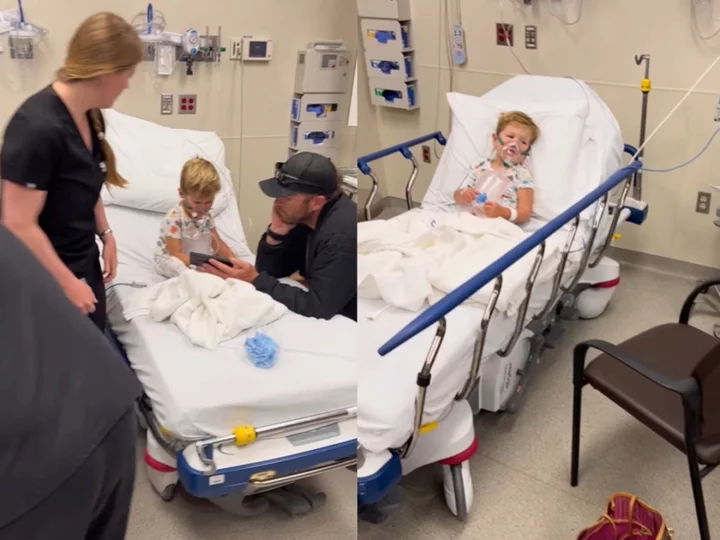
Bode Miller says his toddler son Asher was hospitalised for carbon monoxide poisoning
Bode Miller has revealed that his three-year-old son, Asher, was hospitalised for carbon monoxide poisoning. The US Olympic alpine skier - who shares sons Nash, eight, Easton, four, twin sons Asher and Askiel, three, and daughter Scarlet Olivia, 19 months, with wife Morgan Miller - shared in a since-deleted Instagram post on 27 July that the incident came after a construction crane was parked in the driveway of their home. “Earlier this week we had a crane parked in our driveway for a few hours. Despite keeping the kids inside for obvious safety reasons, the little ones got really sick from it,” he captioned the deleted post, according to People. “Asher ended up in the hospital with carbon monoxide poisoning,” Miller said. “All are well now, but passing along as a reminder to all parents of the dangers of carbon monoxide. Reminder to go test your CO detectors.” While Miller’s post has since been deleted, his wife Morgan shared her own Instagram post about the incident on 28 July. “Receiving a lot of messages so addressing it here,” she captioned her video, which showed her three youngest children wearing oxygen masks in the hospital. “Two weeks ago, we had a crane at our house to remove our broken hot tub. Asher, Aksel and Scarlet innocently stood on the front step of our house to watch the action which resulted in them getting carbon monoxide poisoning due to the lack of airflow in our driveway landing them in the ER,” Morgan revealed. “They were on high flow oxygen for over four hours. It was a terrifying experience but thanking my lucky stars they are okay.” When asked by an Instagram follower how she recognised the signs of carbon monoxide poisoning, Morgan explained that Asher “was complaining of an upset stomach” and he appeared as “white as a ghost”. Asher then began to pass out, which prompted her to rush the toddler to the emergency room. While his tests came back normal, Morgan instructed her nanny to check if her other children were having any symptoms of poisoning. The nanny informed her that Aksel started to have the same symptoms as his twin brother. “I notified the nurse and she said if there’s ever more than one with the same symptoms then they check for carbon monoxide poisoning and sure enough that’s what it was,” Morgan said. “They had us clear the house and bring everyone down to get tested and they sent the fire department up to check our home.” In a separate comment, the professional beach volleyball player revealed that the family has carbon monoxide detectors in their house, but none of them went off. Carbon monoxide poisoning occurs when too much carbon monoxide is in the air, causing the body to replace oxygen in red blood cells with carbon monoxide. According to the Mayo Clinic, some of the symptoms of carbon monoxide poisoning include headache, weakness, dizziness, nausea or vomiting, shortness of breath, blurred vision, drowsiness, loss of muscle control and loss of consciousness. The recent health scare comes after their son Asher was rushed to the hospital following a febrile seizure in December – a convulsion in a child that’s caused by a fever. “Yesterday, Asher had a febrile seizure which scared us half to death. We took that same ambulance to the same hospital we took Emmy to but this time we got to leave with our child,” Morgan wrote in an Instagram Story at the time, alongside a photo of her husband lying down on a hospital bed with Asher asleep on his chest. Their daughter, Emmy, died in an accidental drowning incident in 2018 when she was 19 months old. In a separate Story, Morgan also shared a picture of the pro skier cuddling with his twin sons on the couch after they had brought Asher home from the hospital. “He’s home and back to his normal self,” she said. “I am reminded to slow down and realise life’s little gifts during this crazy holiday season because we already have everything we need… our loved ones, our health, and more time”. “Because time with the ones we love is all we could ever ask for,” she wrote over the final photo, which showed Miller looking affectionately at his three-year-old son. He is also father to daughter Dace, 14, and son Nate, 10, from previous relationships. In June 2018, their daughter Emeline died in a drowning accident at 19 months old. The child was found unconscious at a neighbour’s swimming pool in southern California. Miller, who has won six Olympic medals in alpine ski racing, shared at the time that he and his family were “beyond devastated”. “We are beyond devastated. Our baby girl, Emmy, passed away yesterday. Never in a million years did we think we would experience a pain like this,” he shared in an Instagram post, which featured a picture of his daughter. “Her love, her light, her spirit will never be forgotten. Our little girl loved life and lived it to its fullest every day. Our family respectfully requests privacy during this painful time.” Read More Bode Miller reveals three-year-old son was hospitalised after seizure Olympic gold medal-winning skier Bode Miller's 19-month-old daughter drowns in swimming pool Bode and Morgan Miller urge other parents to remain vigilant at pools after their daughter drowned The two best exercises for lowering blood pressure, according to study Experts reveal the most unhygienic things in your kitchen – and how to get them clean Hepatitis B and C could cause ‘significantly higher cancer risk’ than smoking daily pack of cigarettes
2023-07-28 23:15
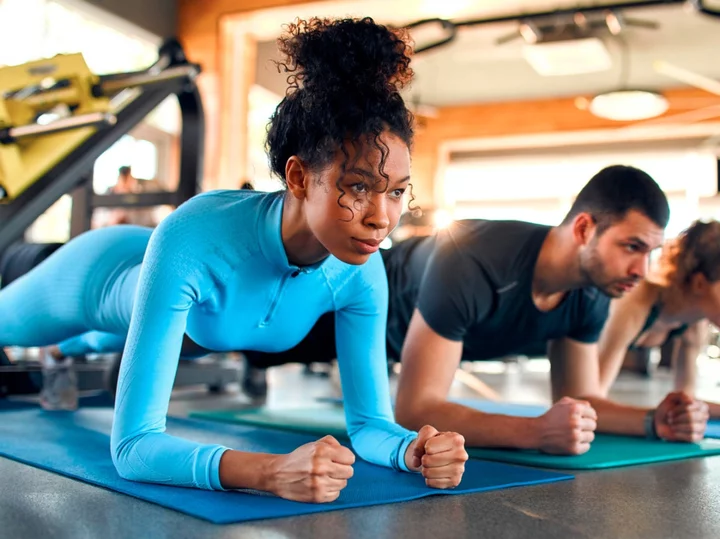
The two best exercises for lowering blood pressure, according to study
Exercises such as “wall sits” could be the best form of activity to help people reduce blood pressure, a new study suggests. Other physical activity including cardio, resistance training and HIIT workouts are also good for bringing down resting blood pressure levels, researchers found. But isometric exercises – those that involve engaging muscles without movement, such as wall sits and planks – provide the best results, they said. The study, published in the British Journal of Sports Medicine, saw researchers conduct analysis on previous studies looking at exercise and blood pressure. Some 270 studies were included in the final analysis which contained data on almost 16,000 people. They examined the impact different exercises had on systolic blood pressure, which notes the force at which the heart pumps blood around the body; and diastolic blood pressure, the resistance to the blood flow in the blood vessels between heartbeats when blood is pumped around the heart. The researchers, led by academics at Canterbury Christ Church University in Kent, found that there were significant reductions in resting blood pressure following cardio (aerobic exercise); dynamic resistance training, such as squats, press-ups and weights; high intensity interval training (HIIT); and combined training and HIIT. But the largest reductions were seen after isometric exercise training. A secondary analysis on specific types of exercises found the most benefit was seen among those who performed “isometric wall squats” and among runners. The academics said that current exercise recommendations for the prevention and treatment of high blood pressure are based on “older data” and suggest that it may be time to review the current guidelines. “Aerobic exercise training, dynamic resistance training, combined training, high-intensity interval training and isometric exercise training are all significantly effective in reducing resting systolic and diastolic blood pressure,” they wrote. “Overall, isometric exercise training is the most effective mode in reducing both systolic and diastolic blood pressure. “These findings provide a comprehensive data driven framework to support the development of new exercise guideline recommendations for the prevention and treatment of arterial hypertension.” For the average adult high blood pressure is considered to be from 140/90mmHg. When a person’s blood pressure is too high it puts extra strain on blood vessels, heart and other organs, such as the brain, kidneys and eyes. Persistent high blood pressure can lead to a number of serious health problems including heart attacks, strokes and vascular dementia. While there are medications which can help, people can make a number of life-style changes to help bring their blood pressure down including regular exercise, losing weight, cutting back on caffeine, alcohol and salt. Read More Dating app screenshot culture is out of control Husband fired from family business after wife roleplayed with reborn dolls The bowel cancer symptom George Alagiah wished he’d caught earlier Charity boss speaks out over ‘traumatic’ encounter with royal aide Ukraine war’s heaviest fight rages in east - follow live
2023-07-28 19:47

Experts reveal the most unhygienic things in your kitchen – and how to get them clean
It’s likely there are countless things in your kitchen which look clean, but actually, they’re filthy. Could your dishcloths be making you sick? When was the last time you washed your tea towels? And do we really need to bleach the sink more than once a month? We asked an expert to find out. Knobs, door handles, and buttons The buttons and dials on your kitchen appliances could be a germ-fest. “People often neglect to clean these areas of the kitchen,” says Danielle Mason, a cleaning content creator – or ‘cleanfluencer’ – who creates tutorials and videos on TikTok and Instagram. “Most of the time, they don’t think it is important, but as you’re commonly handling raw meat and food, it’s extremely important to keep these areas clean, due to cross-contamination. “Always sanitise with a cloth – I like to do this with Zoflora, as it leaves a great smell afterwards, and kills bacteria from dirty fingers.” Cloths If what you clean with isn’t clean, chances are, your kitchen isn’t either. “I always leave my cloth to soak in bleach before going to bed every night,” says Mason. “This enables a new start in the morning with no bacteria. Also, make sure you’re replacing the cloths – I would suggest a new one every two weeks, whilst still bleaching every night. And make sure you’re not using this cloth on anything other than the kitchen, as you do not want to cross-contaminate.” Sponges Mason stresses sponges are unhygienic, as they’re constantly damp and can carry E. coli. “People tend not to use sponges, as they carry so many more germs, and even putting them in the microwave will not kill all of them. Avoid a sponge where possible.” Dish towels Dish towels and tea towels may not be changed anywhere near often enough. “You should have one for every day of the week, as they carry so many bacteria and germs, which get spread across the kitchen. If you’re drying pots and pans, and then wiping down your surfaces, it’s not good,” she says. Chopping boards Chopping boards – particularly wooden ones – could be a haven for bacteria. “You should have a different colour for different types of food, one for meat, fruit, and other foods,” advises Mason. “The best way to clean them is in a dishwasher, as it’s good to get rid of all the germs due to the very high heat. If you don’t like the dishwasher, then boil the kettle water and leave the chopping boards to soak in it. I use a steam cleaner on mine, as it kills 99.9% bacteria and there are no chemicals.” It is best to avoid wooden chopping boards altogether, as these cleaning methods may damage them. Kitchen sink “This is a massive breeder of bacteria and grime; a distinct microbiome is found in sinks. “The plumbing area found beneath sinks revealed microbial communities dominated by a group of bacteria called Proteobacteria. This phylum includes pathogens such as Salmonella and E. coli, which can cause serious disease,” Mason shares. “I’ve always been taught never to wash my hands in the sink, and to never throw dirty water down the sink. You wash your cups and plates in the sink and prepare food, so it should always be kept clean, and nothing from outside the kitchen should cross-contaminate that. For example, never wash your floors and put dirty water in your kitchen sink, always throw it down the toilet.” How do you possibly clean the inside of your sink and drains? “Baking soda and vinegar is the best way to clean your sink out, or bleach, but you must be careful with bleach, as it can stay in the bottom of your sink, depending on the material it’s made of. I clean my sink out every day.” Pipes and cupboards around your sink could be leading you to have a rodent problem. “You can prevent mice and rodents from entering the kitchen by covering any small crevices or cracks. It is also important to repair leaks as soon as they happen, as they can come through the pipes,” she says. Fridges “Deep clean [your fridge] every two months. A normal cleaning – the wiping of shelves – should be done every other day with soapy water. For any bad smells, use baking soda, which will absorb the smell from the fridge,” Mason continues. “The fridge is a breeding ground for salmonella, E. Coli and other bacteria.” Bins Where you throw your waste away could be a breeding ground for germs. “Make sure you keep [outdoor] rubbish bins away from your house, and make sure you empty your bin as soon as it’s full,” advises Mason. “I personally do not keep a bin in the kitchen, I use a bag and I take that out by the end of the day, but if you are using a bin, make sure you bleach it with hot kettle water, to keep it smelling fresh.” Read More This is why you keep waking up at 4am – and what you can do about it TV chef James Martin reveals cancer diagnosis in apology over ‘bullying’ allegations Bursts of activity that make you huff and puff ‘linked to reduced cancer risk’ Charity boss speaks out over ‘traumatic’ encounter with royal aide Ukraine war’s heaviest fight rages in east - follow live
2023-07-28 17:51
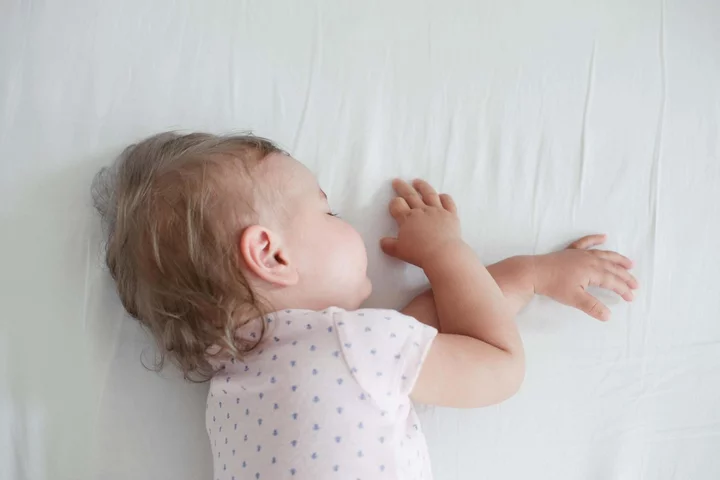
Study uncovers what nap times reveal about young children’s brain development
Babies and toddlers who nap a lot may have smaller vocabularies and poorer memory and thinking skills, research suggests. Parents and guardians all over the world worry about their children getting either too little or too much sleep. But a new study reveals that some children are better at consolidating information during sleep, so they nap less frequently. Those with fewer words and poorer cognitive skills need to nap more frequently, the researchers found. Young children will naturally nap for as long as they need and they should be allowed to do just that Dr Teodora Gliga, University of East Anglia However, the findings suggest that reducing naps for these children will not improve brain development, and that they should be allowed to nap as frequently and for as long as they need. Lead researcher Dr Teodora Gliga, from the University of East Anglia (UEA), said: “There is a lot of parental anxiety around sleep. “Parents worry that their kids don’t nap as much as expected for their age – or nap too frequently and for too long. “But our research shows that how frequently a child naps reflects their individual cognitive need. “Some are more efficient at consolidating information during sleep, so they nap less frequently. “Children with smaller vocabularies or a lower score in a measure of executive function nap more frequently.” She added: “Young children will naturally nap for as long as they need and they should be allowed to do just that.” The research team studied 463 infants aged between eight months and three years during lockdown in 2020. What we found is that the structure of daytime sleep is an indicator of cognitive development Dr Teodora Gliga, University of East Anglia Parents were asked about their children’s sleep patterns, their ability to focus on a task, keep information in their memory, and the number of words that they understood and could say. They also asked parents about their socioeconomic status – including their postcode, income, and education – and about the amount of screen time and outdoor activities their child engaged in. Dr Gliga said: “Lockdown gave us an opportunity to study children’s intrinsic sleep needs because when children are in childcare, they rarely nap as much as they need to. “What we found is that the structure of daytime sleep is an indicator of cognitive development. “Infants with more frequent but shorter naps than expected for their age had smaller vocabularies, and worse cognitive function. “We also found that this negative association between vocabulary and frequency of naps was stronger in older children.” She added that although the majority of parents reported that lockdown did not impact their children’s sleep, parents from lower socioeconomic backgrounds were more likely to report a worsening in sleep. Caregivers should use a child’s mental age and not chronological age to ascertain a child’s sleep needs Dr Teodora Gliga, University of East Anglia “Screen time increased during lockdown and outdoor activities decreased but these did not explain differences in children’s sleep,” Dr Gliga said. She continued: “Our findings suggest that children have different sleep needs – some children may drop naps earlier because they don’t need them anymore. “Others may still need to nap past three years of age. “In the UK, preschools enrolling three to five-year-olds have no provisions for napping. “Caregivers should use a child’s mental age and not chronological age to ascertain a child’s sleep needs.” The study, published in the JCPP Advances journal, was led by UEA in collaboration with researchers at the University of Oxford, Oxford Brookes University, the University of Leeds and the University of Warwick. It was funded by the Economic and Social Research Council (ESRC). Read More Charity boss speaks out over ‘traumatic’ encounter with royal aide Ukraine war’s heaviest fight rages in east - follow live Bursts of activity that make you huff and puff ‘linked to reduced cancer risk’ New outfits in Highland dress collection help museum tell the story of modern tartan 5 expert-approved ways to stop your hair colour fading this summer
2023-07-28 16:27
You Might Like...

Neglecting women’s health at work could cost UK economy £20.2bn a year – analysis

Pregnant influencer in coma after suffering from ruptured aneurysm one week before due date
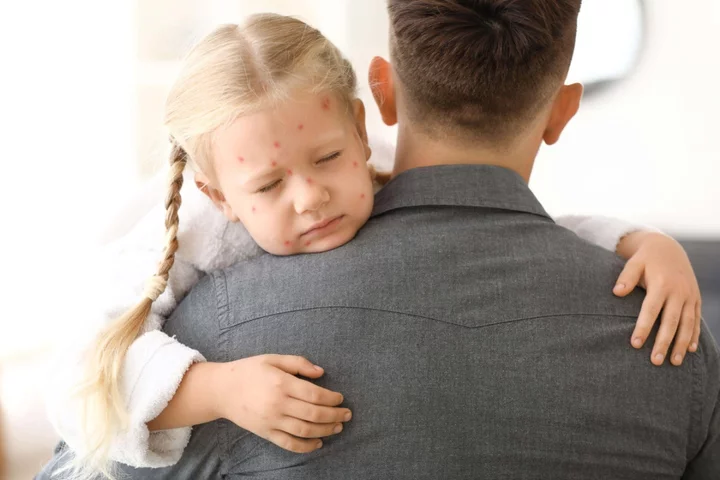
Can I go to work if my child has chickenpox?

Your forties is the perfect decade to have your first child – I’m living my best life

Angelina Jolie shares tribute to late mum and urges women with family cancer history to get checked
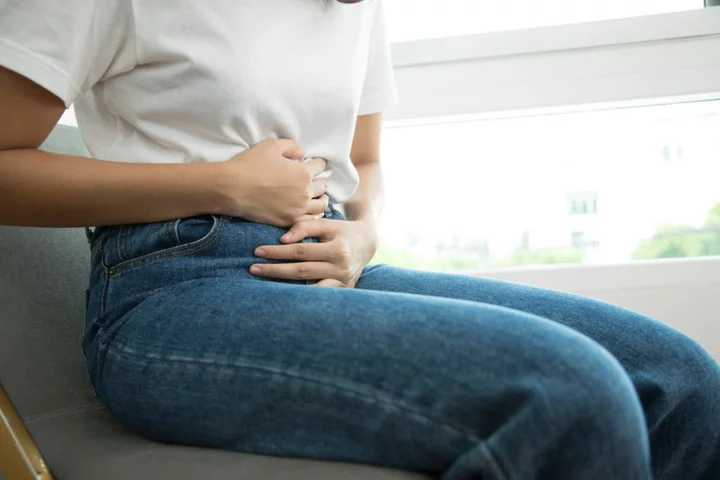
Adenomyosis: 5 things you need to know about the ‘evil twin sister’ of endometriosis

Paris Hilton says using surrogacy was a ‘difficult decision to make’

Ashley James: ‘We have a totally warped idea of what a mum should be’
